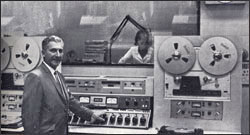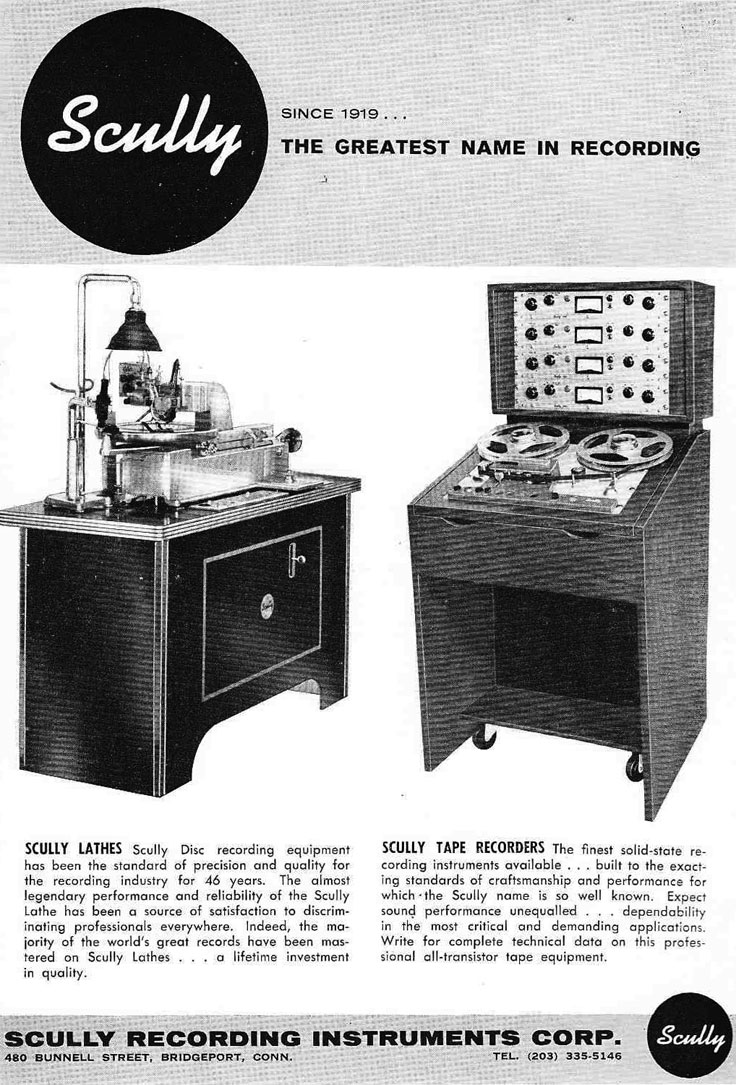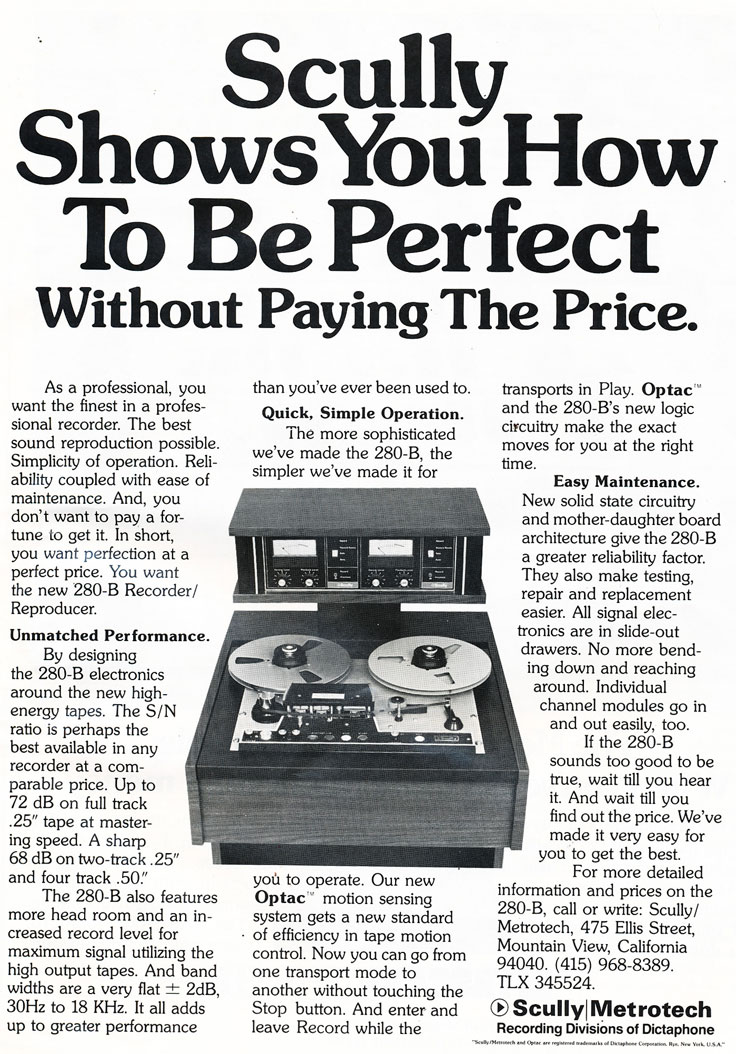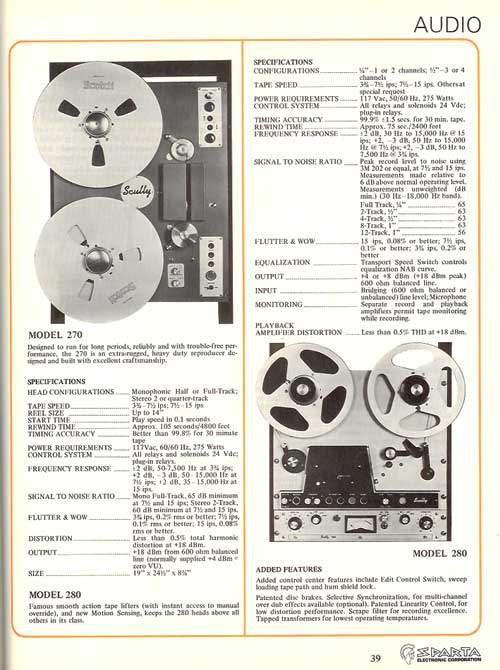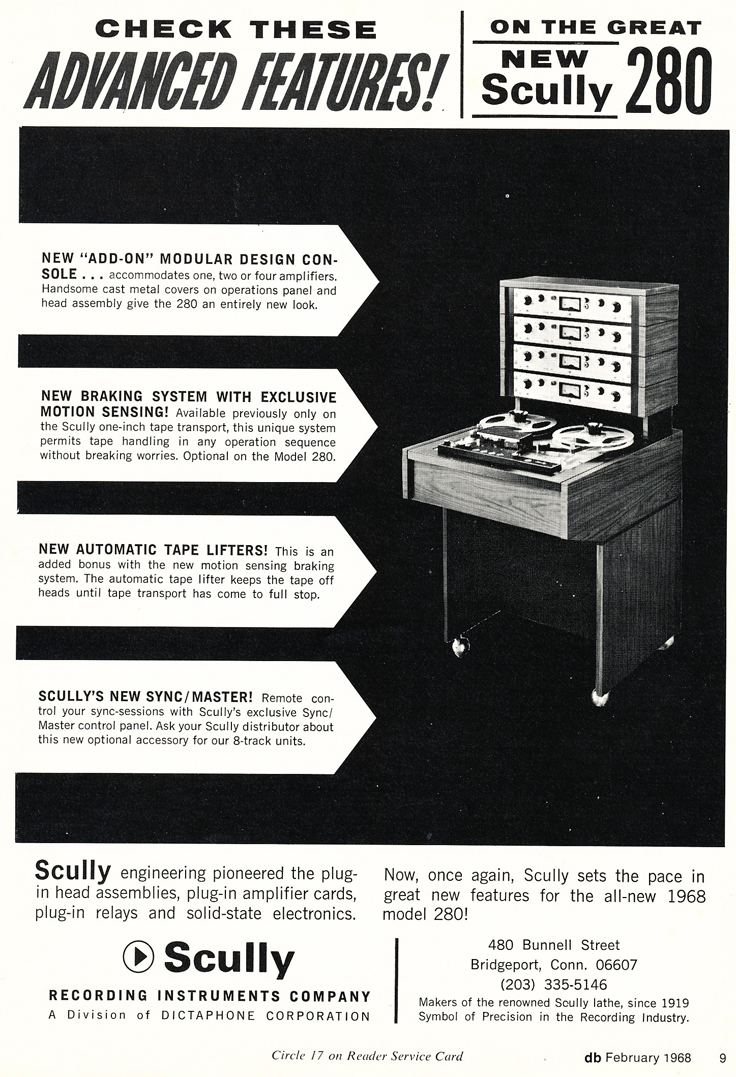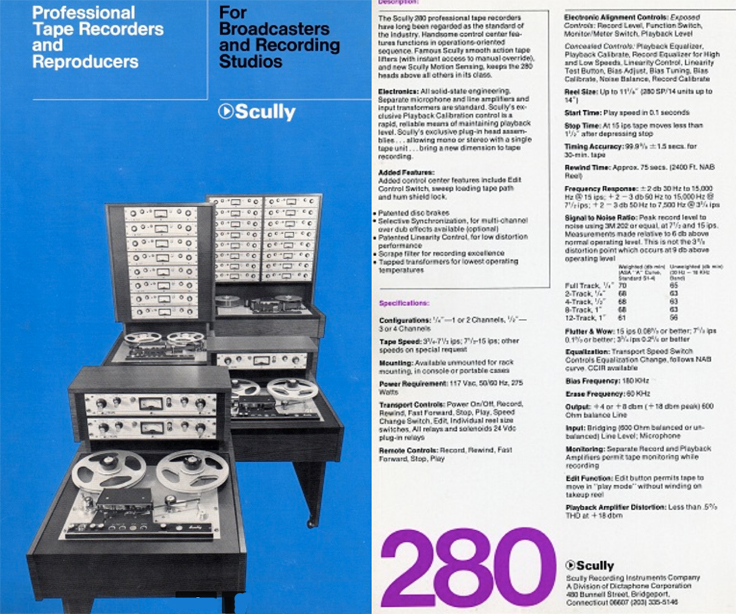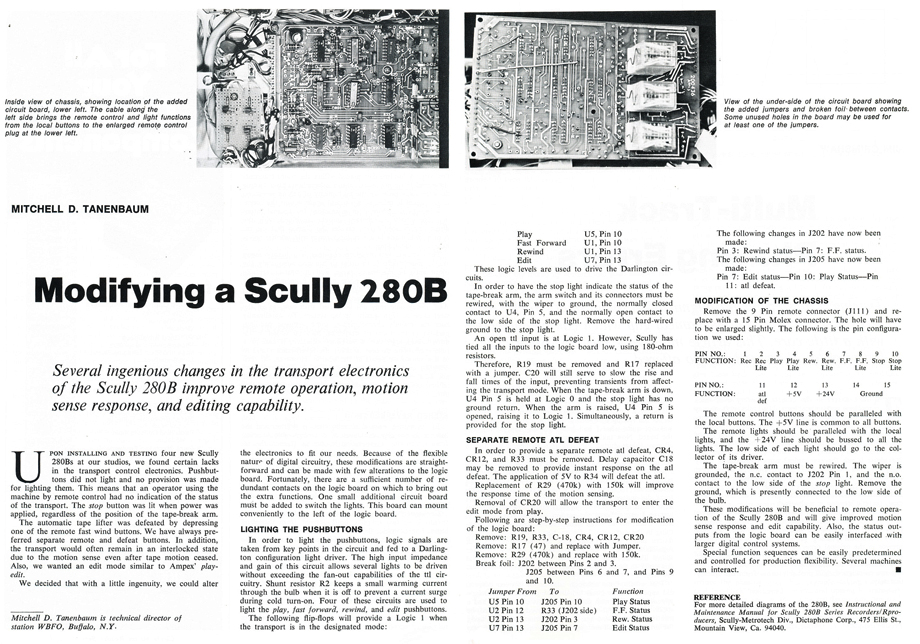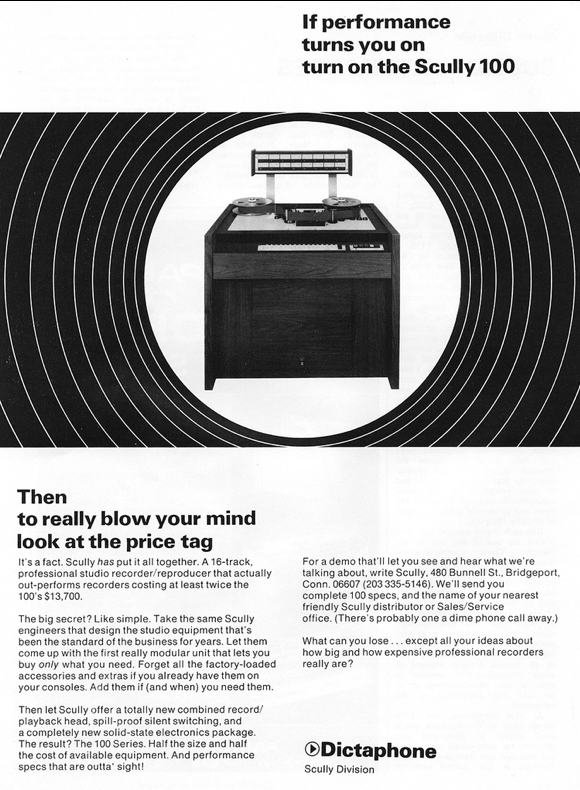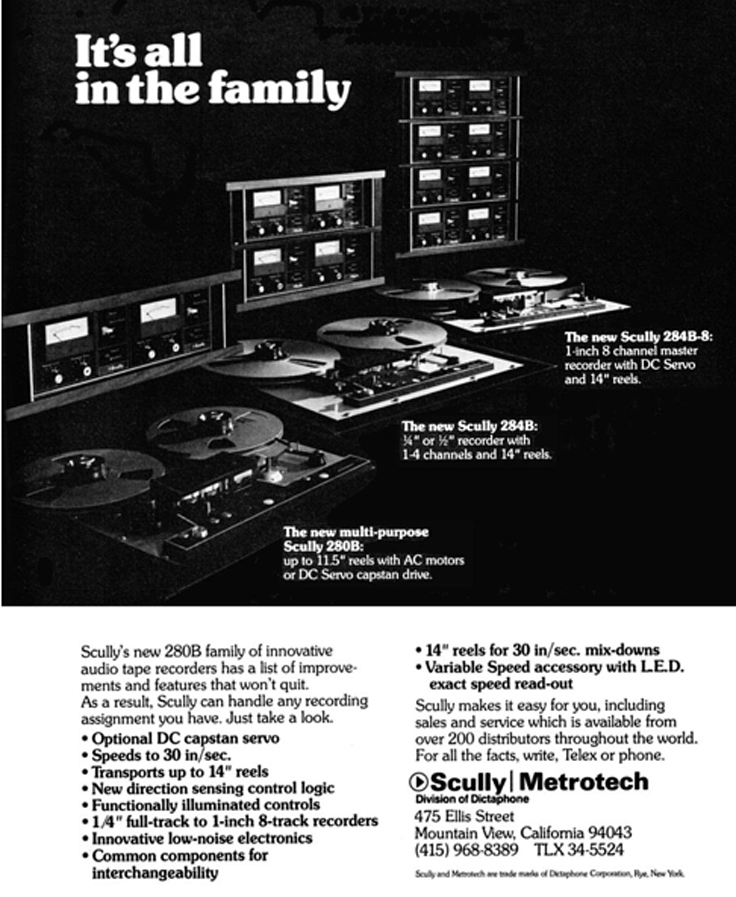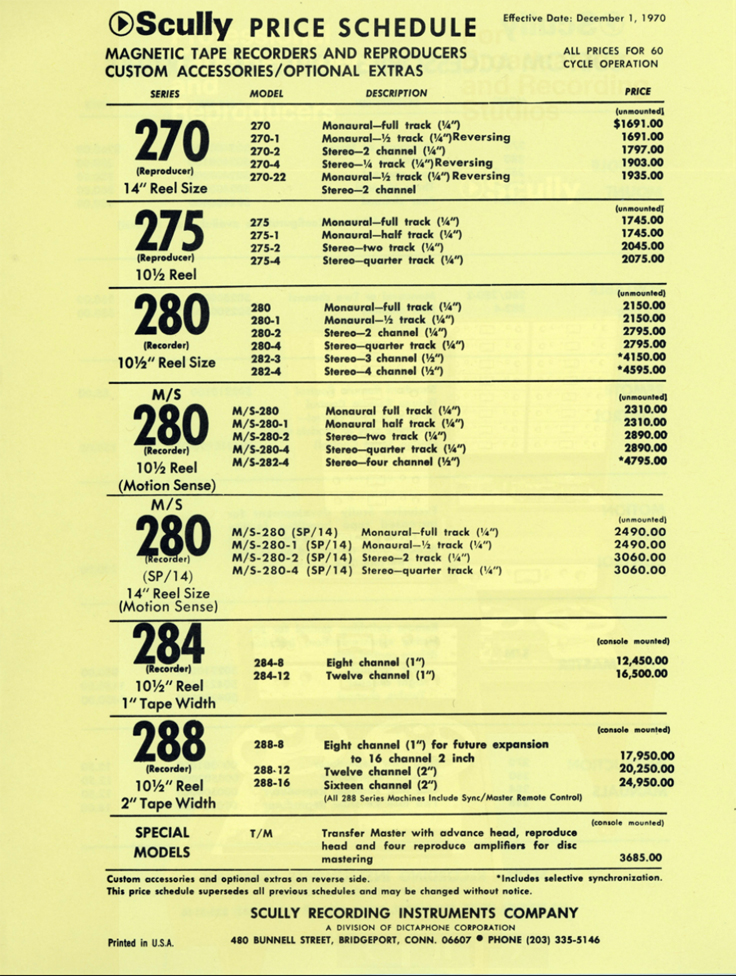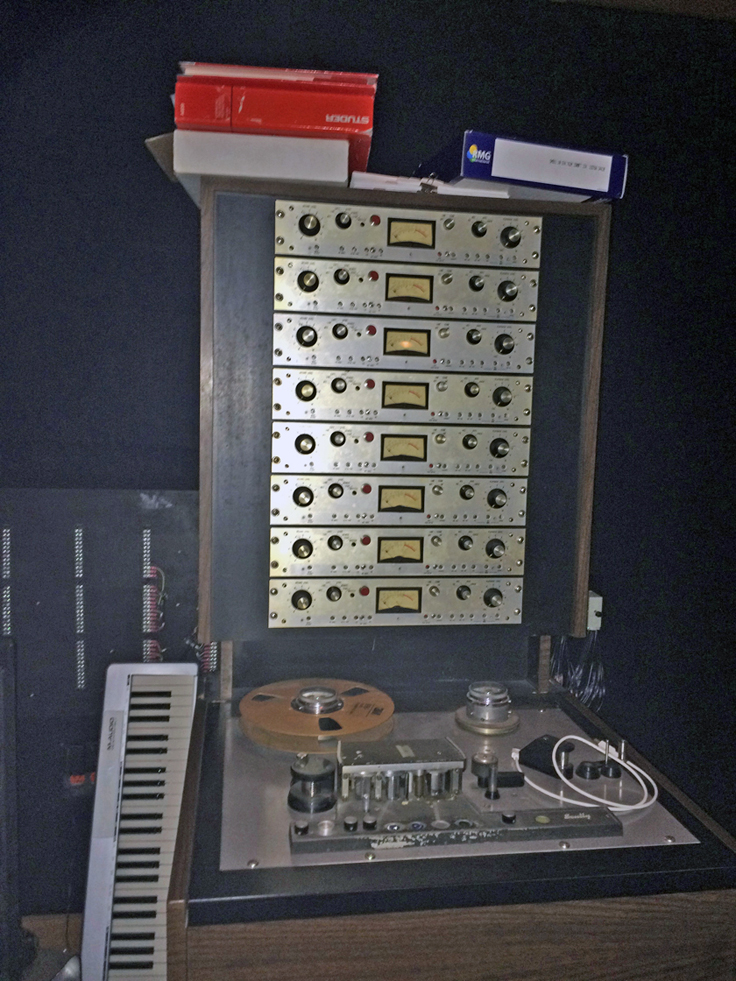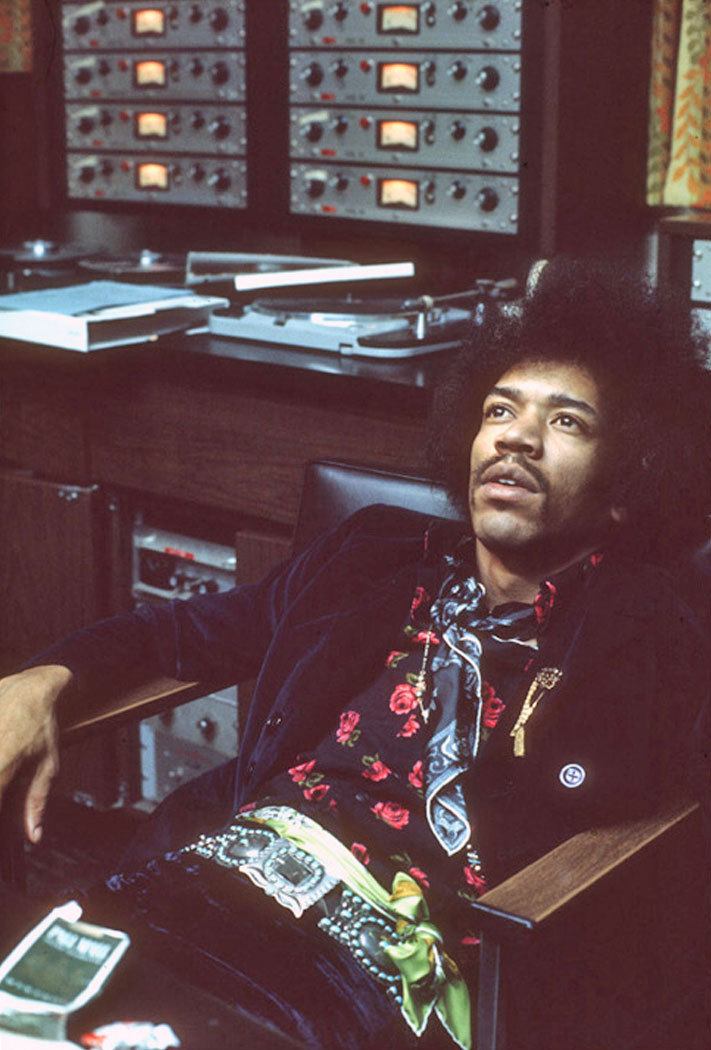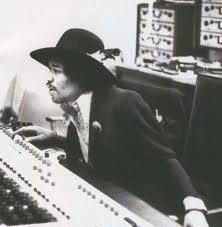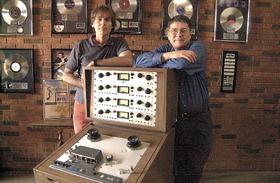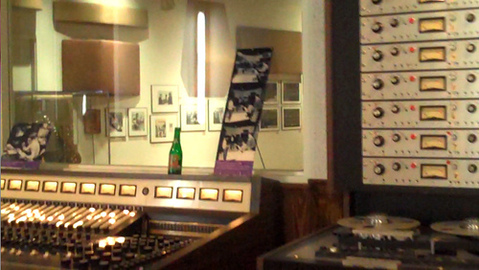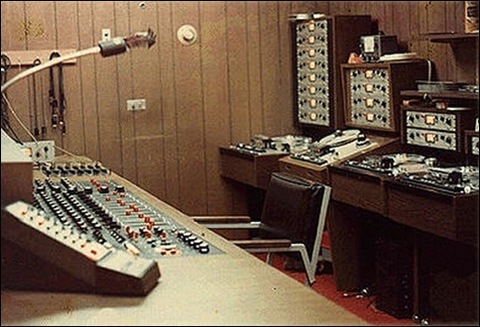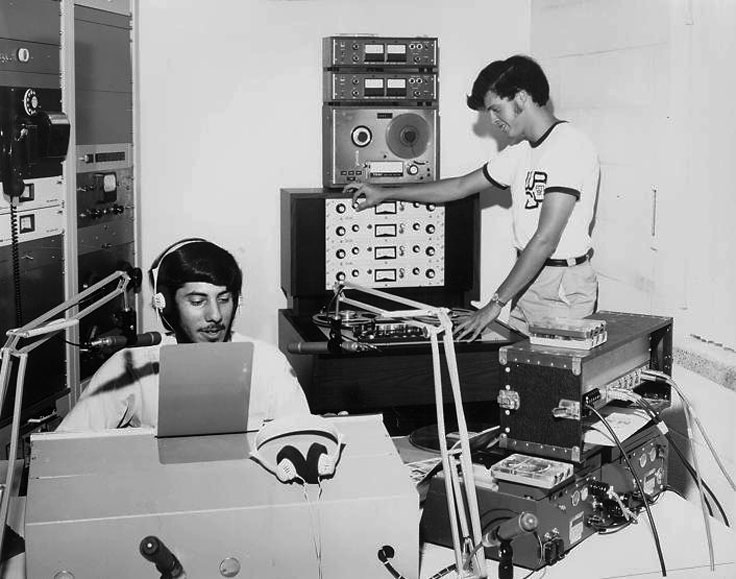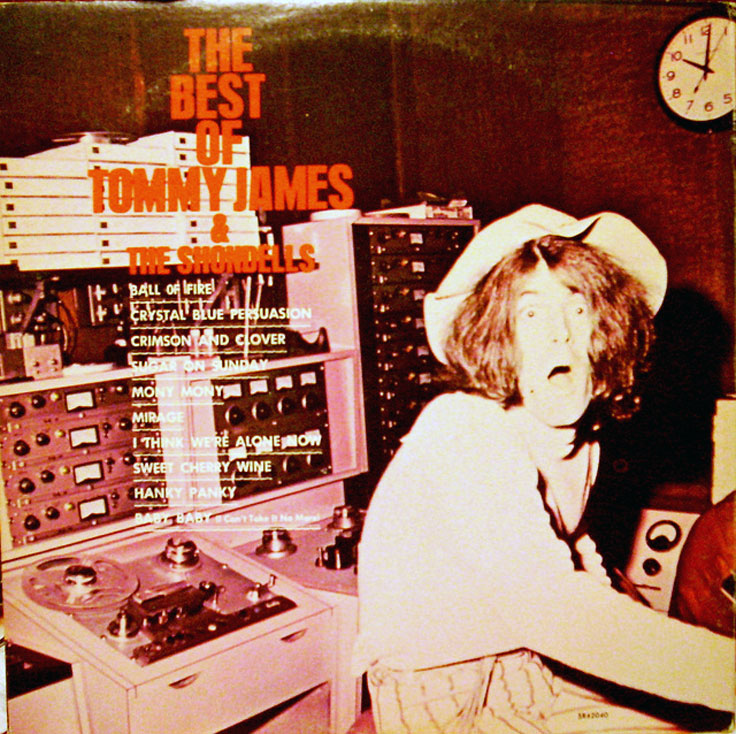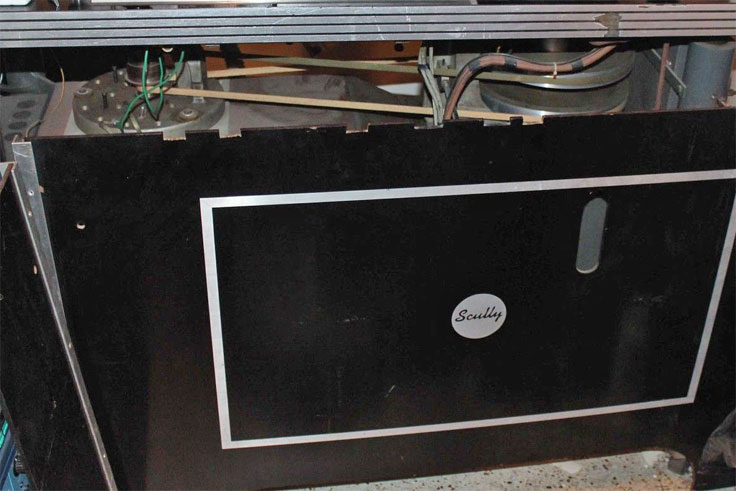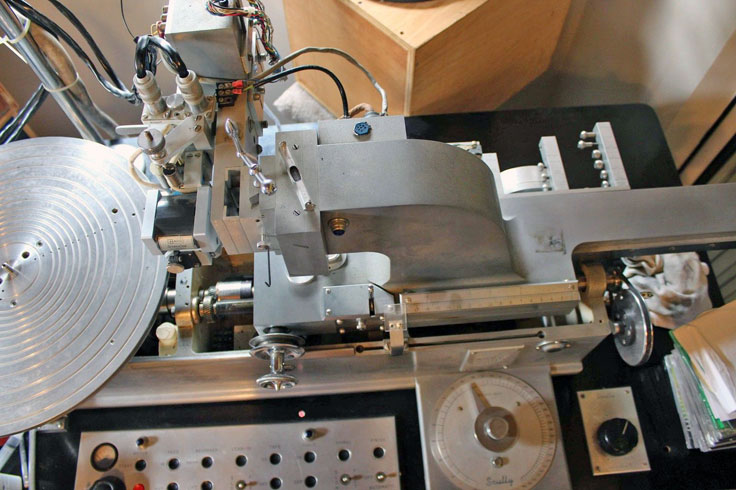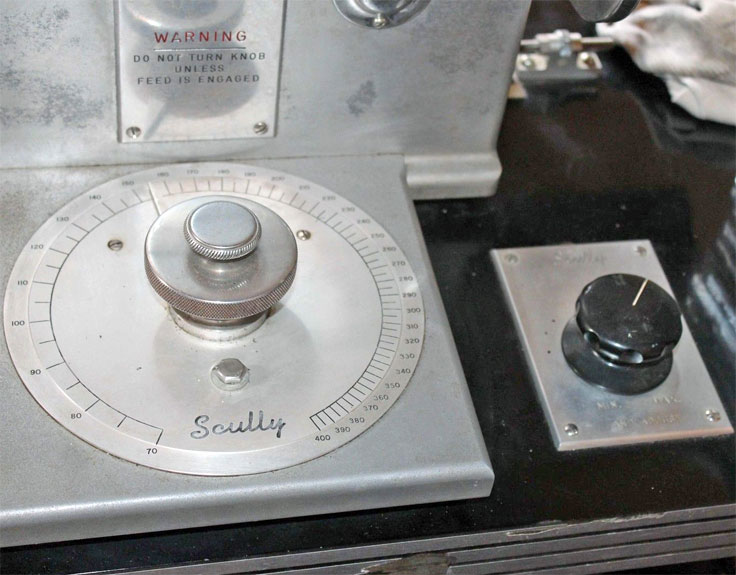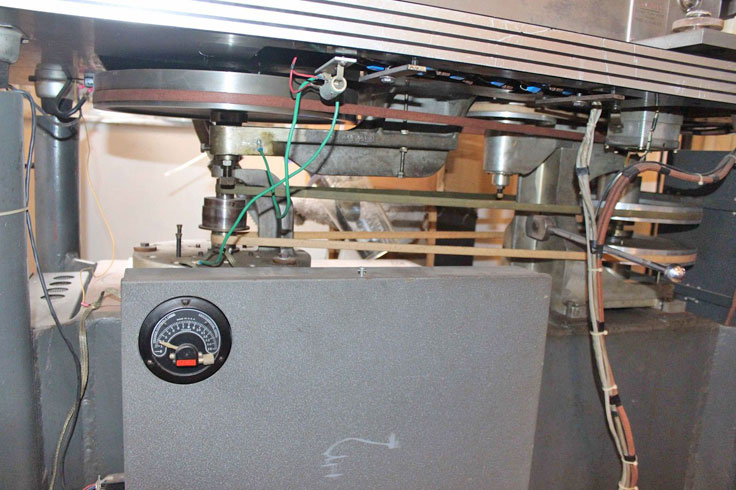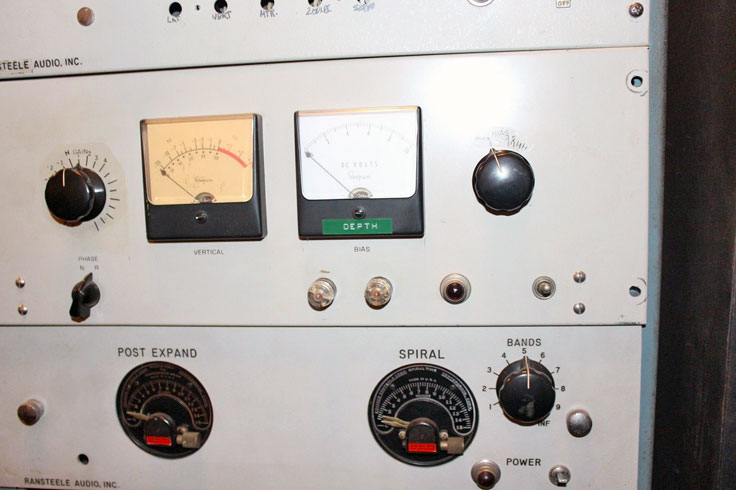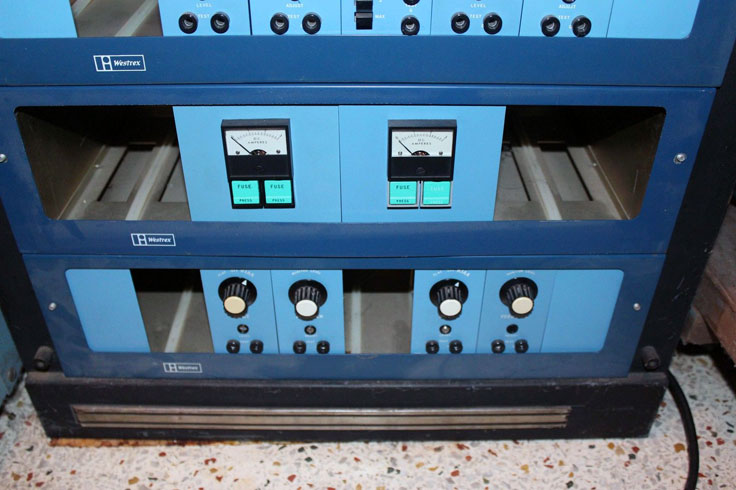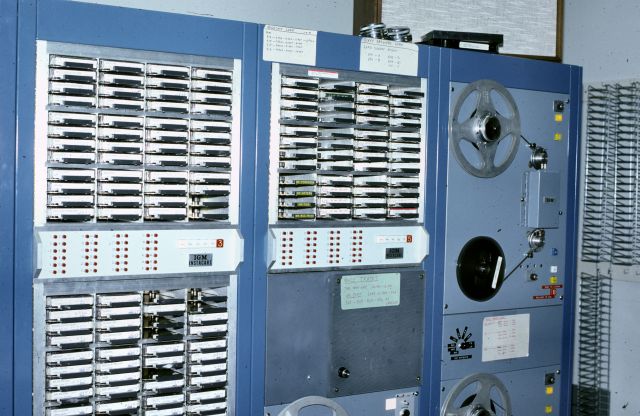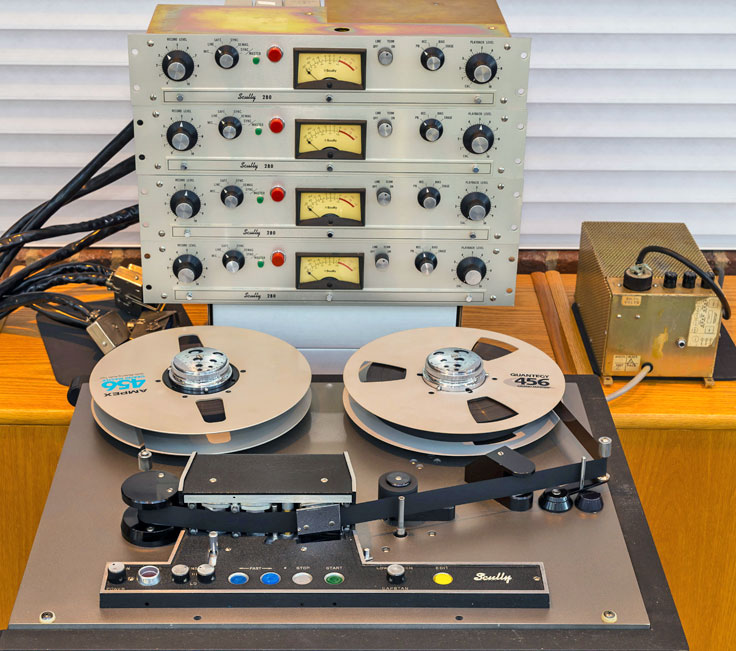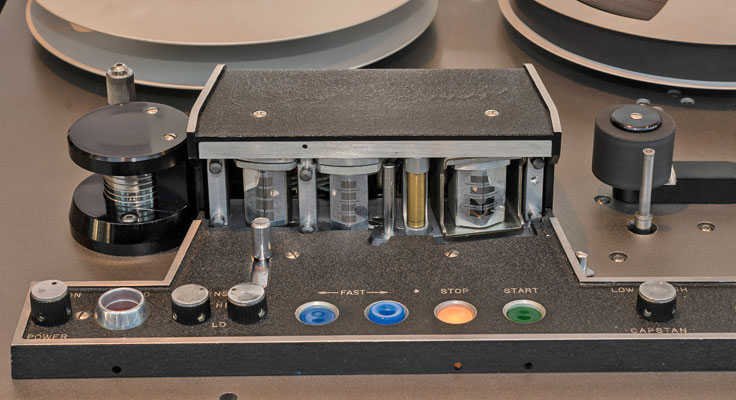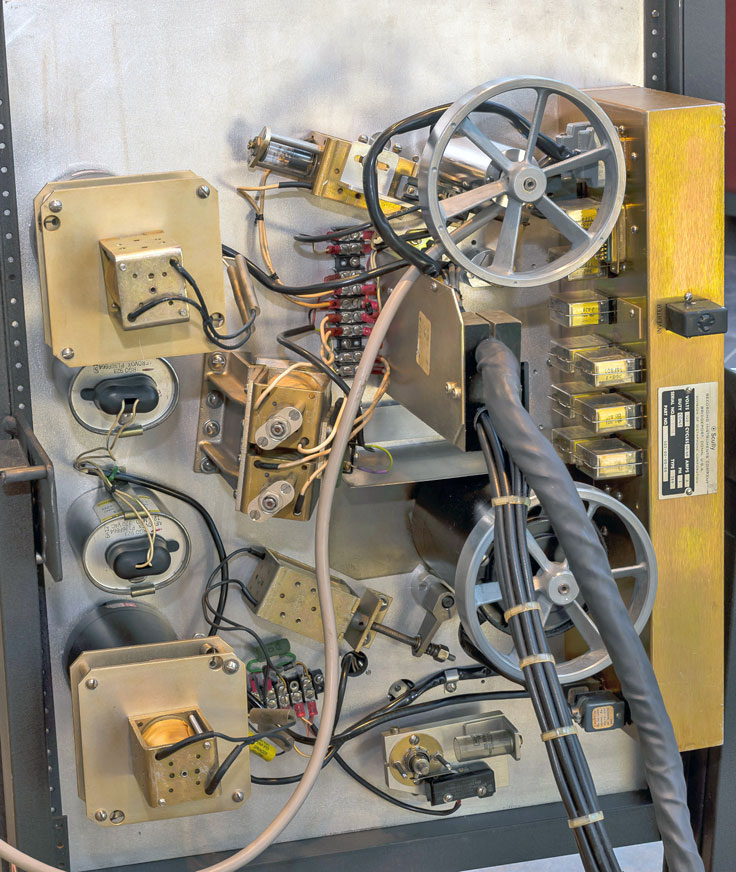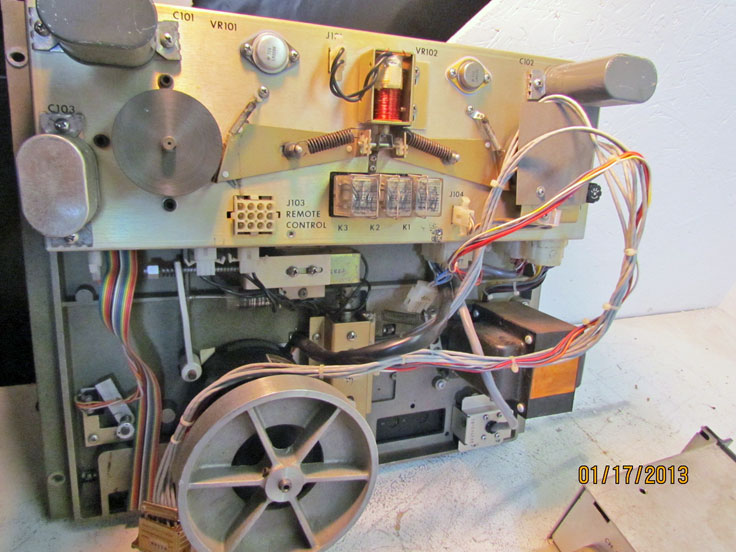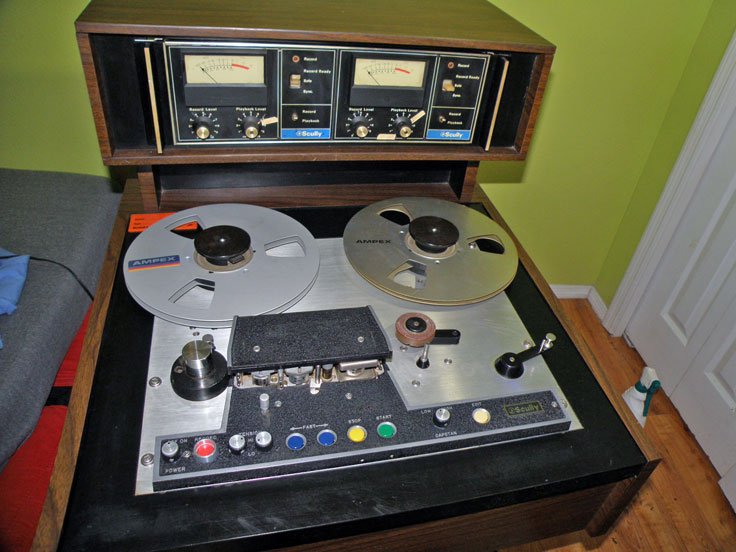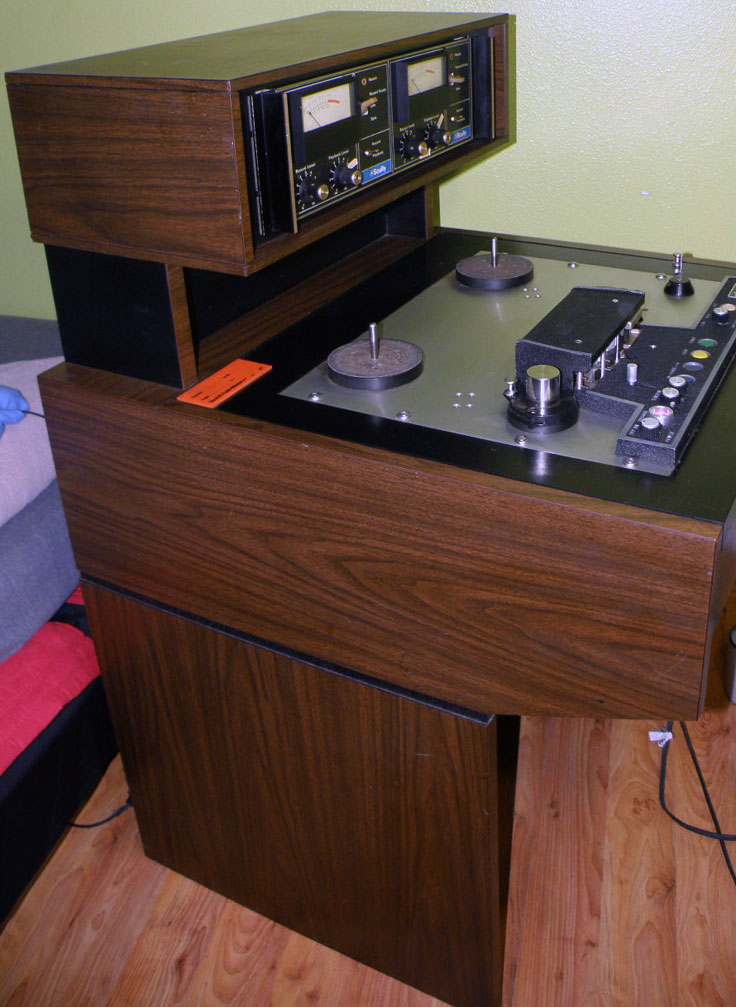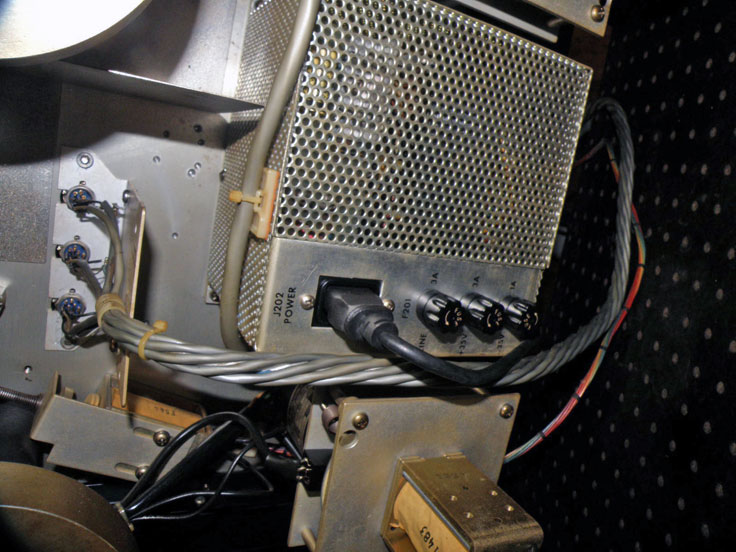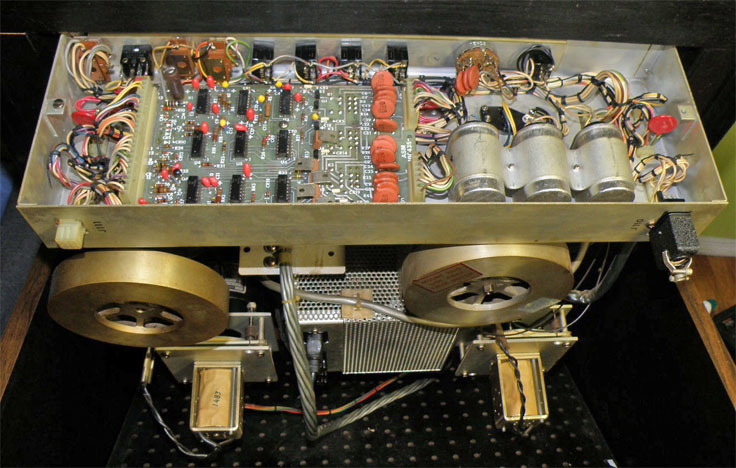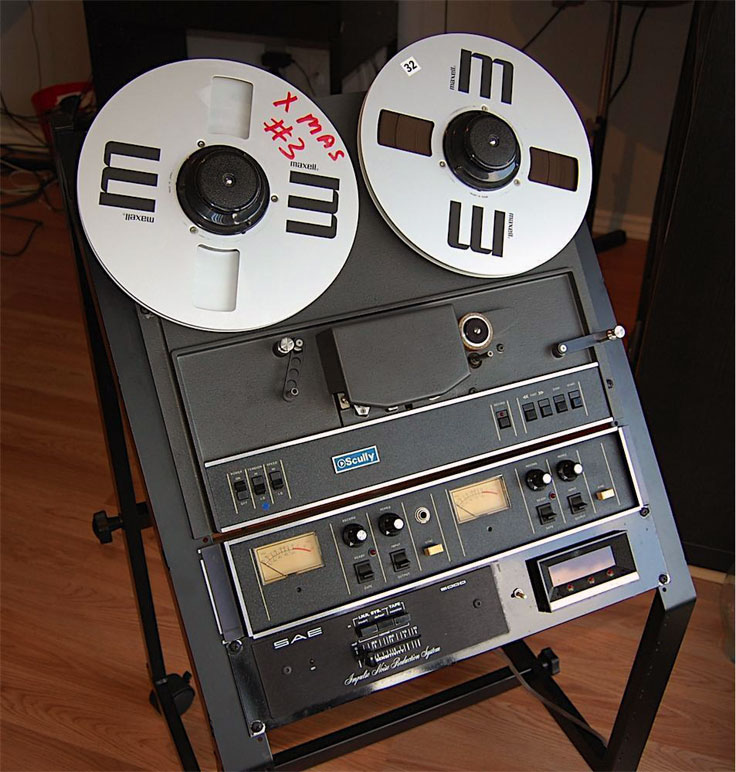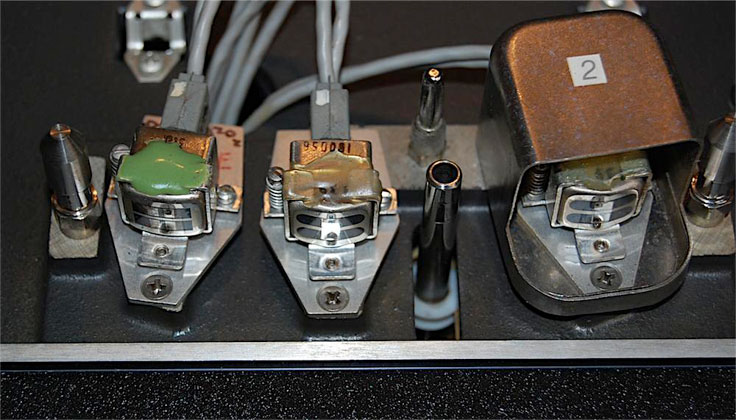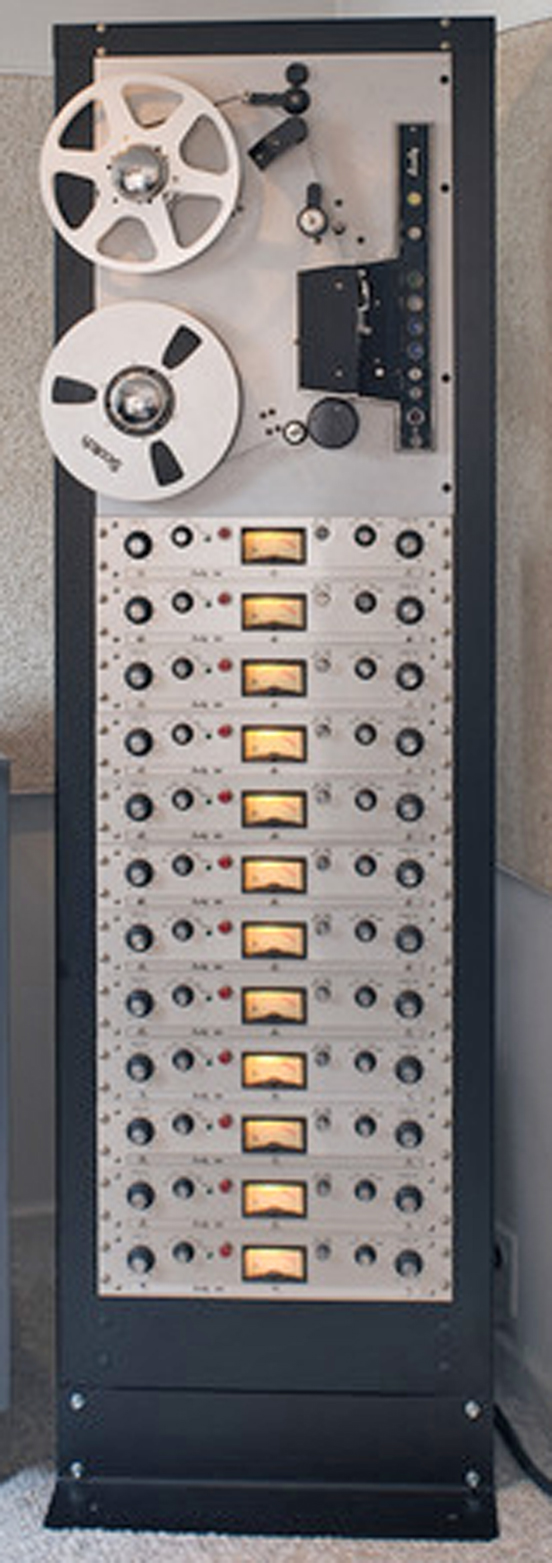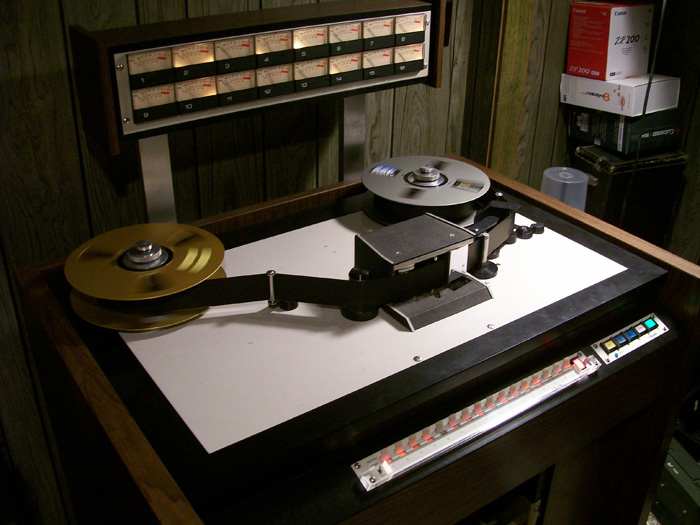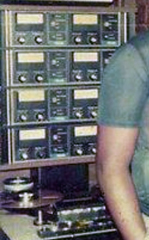
Scully Recording
Instruments Corporation
reel to reel tape recorders

Manufacturer Profiles
This is a list of information we have gathered from a variety of sources on some of the major analog reel to reel tape recorder and related equipment manufacturers. While we have strived to provide the best information available to us, there will be corrections and additions. We include personal stories about the companies when they are provided to us. We always invite input on corrections and updates. Thank you!
Statistics 2014 • 2015 • News coverage #1 News coverage #2 • view overview video of tape recorder collection • mobile video • more info • See also Multi-Track recording
Go to: • 3M • AEG/Magnetophon • AIWA • Akai • Altec • Amplifier Corp • Ampex • Ampro • A. R. Vetter • Astatic • Astrocom/Marlux • Bang & Olufsenl • Bell & Howell • Bell Labs • Berlant Concertone • Beyerdynamic • Brenell • Braun GmbH/ASE • Brüel & Kjær • Brush • Cetec Gauss • Concord • Craig • Crown • Denon •Dokorder • Dual • Edison • Eico • Electro Sound • Electro Voice • EMI/Gramophone • Fairchild • Ferrograph • Fostex • Freeman • GE • Grundig • HeathKit • ITC • JVC • KLH • Leevers Rich • Lyrec • Magnecord • Mara Machines • Marantz • Maxell • MCI • Mitsubishi • Nagra • Nakamichi • Neumann • Newcomb • Neve • Oki • Otari • Pentron • Philips • Pioneer • Presto • Radio Shack/Realistic • Rangertone • RCA • Reeves Soundcraft • Revere • Roberts • Rola • Sansui • Sanyo • Scully • Sennheiser • Shure • Solid State Logic • Sony • Soundcraft • Spectone • Stancil Hoffman • Stellavox • Stephens • Studer ReVox • Tandberg • Tape-Athon •Tapesonic • Teac/Tascam • Technics • Telefunken • Thorens • Tolnai • Toshiba • Uher • Viking • Vortexion Ltd UK • Webster Chicago/Webcor • Webster Electric • Western Electric/Altec • Wilcox-Gay • Wollensak
View calendar which lists company creation dates associated with world and recording history
Hi there! Thrilled to see your profile of our family and our contribution to the history of recording. Some factual errors in this profile and I'm happy to edit and send back to you if you're interested - let me know how best to go about this. Thank you so much.
Eileen Scully
Subject: Re: Scully
Date: August 25, 2015 at 9:11:45 AM CDT
To: Martin TheophilusThanks for getting back to me so quickly, Martin! I'll work with Dad on this and get it back to you as soon as I can. And I'll see what else we have that I can send over. Thanks for honoring us this way. Eileen E. M. Scully
Scully Recording Instruments founded by John J. Scully & his son Larry Scully - 1919 to the mid 1980's
Phantom Productions, Inc. does not not have a Scully recorder in the collection. However we are including this segment to profile the US built recorder's significance in the market.
The following excerpts are from "A Brief History of the Scully Tape Recorders," comments by their Sales Manager Ham Brosious and other sources listed in the credits.
Scully Recording Instruments was a major manufacturer of professional audio tape recorders and other equipment based in Bridgeport, Connecticut from 1919 to approximately 1974.
The Scully Lathe was designed by John J. Scully (who originally was from Ireland) and his son Lawrence Scully. John J. Scully worked for Columbia Records from 1915 to 1919. In 1919 in his machine shop he produced a recording lathe.
Larry Scully founded Scully Recording Instruments in Bridgeport Connecticut as a builder of disc cutting lathes. He was a gifted machinist and designer.
Business went well and Scully dominated the marketplace for lathes from the 1930's to the 1960's. Almost all major
lacquer masters were cut on a Scully Lathe.
When Neumann lathes arrived in the US, it became clear that Scully had a problem and the decision was made to enter the tape recorder market. John Mosley enabled Scully to move to tape recorders.
Scully Raised $300,000 & bought parts for 500 recorders at a cost of $270,000. The first recorder was named the 270 (based on the $270,000) by their Sales Manager Ham Brosious.
The Scully 270 was a long play machine with 14" reel capacity and auto reverse. It was used for logging, backgroundmusic and automated radio stations.
Scully had overbought parts for the machine. The machine sold, but not nearly fast enough to use up the huge parts investment in a reasonable amount of time, so the decision was made to design and build machines for the music and broadcast industries.
Dan Cronin, chief engineer at Bell Sound was contracted to design the Scully 280 with a mandate to use up the Scully 270 parts. Cronin had already designed the playback amp which had been used in the Scully 270. He used that playback amp and whatever he could from the Scully parts inventory to come up with the Scully 280 in 1965.
Arthur Gruber, son of one of the founders of Presto Recording Corporation, worked in the 1950’s designing the tape transport system of the Presto 800 recorders. Presto was absorbed in corporate mergers and eventually closed down. So, Gruber and several other engineers went to Scully to design the Scully tape recorders. Arthur was chief engineer and vice president of Scully from 1961 to 1968.
Scully's newly developed transports had several innovative features. Instead of Ampex' gate cover / tape lifter, Scully's had a handle that actuated the tape lifter and retracted the playback head shield. The shield could also be locked in the retracted position. People who edited tape immediately took to Scullys.
In 1966 many recording studios were looking to upgrade to 1" 8-track. Although Ampex had invented Sel-Sync and built the first 1" 8-track (Les Paul's "Octopus") and several others (Tom Dowd at Atlantic) as special orders they still didn't "get" the idea of 1" 8-track music production.
Scully positioned themselves to gain this market and entered it aggressively in June of 1966.
(right) 1966 Scully Recording Instruments featured the studios of WNEW-FM in New York.
Scully 1" machines used the 284 transport, a beefed up version of the 280 with 12" reel capacity (compared to 10" max on AG300), automatic tape lifters and motion sensing (not offered on AG300).
Electronics for an 8-track 280 (Scully 284-8) with sync repro took up 16U of rack space. Those for an AG300-8 took up 28U.
Scully offered the Sync Master remote control, designed by chief engineer John Curtis, which allowed switching of channel safe/sync/repro and transport control at the engineer position. Ampex offered no such device until the introduction of the MM1000 in 1968.
The company was sold in the late 1960s and after staying on for five years both the Grandson Jerry and his dad joined forces to create LJ Scully. They stayed in business together until 1988.
The founder John J. Scully passed away in 1989. Larry & Jerry produced play-back machines as well as their own lathe in later years.
Scully was purchased by Dictaphone in 1967 but apparently operations continued as before. By the end of that year, Scully was a major player in the studio market when it introduced 1" 12-track (284 transport) and later, 2" 16-track machines (288 transport).
From 1967 to 1969, 1/4" 2-track and 1" 8-track machines were Scully's best sellers.
3M sent all multitrack recorder manufacturers scurrying in 1969 when it introduced the M56 16-track machine.
Scully chose to compete with price. In 1970, a 16-track machine cost around $15,000. The Scully 100 was introduced in 1971 utilizing the same transport as the 16-track 288 with new central 16-track electronics designed by William Dilley of Spectrasonics. By eliminating the repro head and using one high quality narrow gap head for both record and repro, the expense of repro / sync switching circuits was eliminated. The Scully 100 list price was under $11,000.
Scully's share in the disc lathe market continued to be challenged by Neumann's integrated systems. At this point, Dictaphone decided to move manufacturing of the tape recorders to Mountain View California. A machine that had been built in Bridgeport Connecticut began to be referred to as a "Bridgeport Scully".
Scully backed out of the multitrack market before 2" 24-track caught on and concentrated on the broadcast market developing an updated 1 to 8-track machine, the 280B.
Though an excellent machine that built on the reliability of the 280 transport with new low noise electronics, the 280B entered a market that now had MCI JH110, Ampex AG440, 3M M79, Studer B67 and early entries from Tascam and Otari. 280 B manual
Sales never took off, and after several years of mismanagement, Dictaphone eventually sold it to Ampro who apparently closed down thereafter.
Presumably, when Larry Scully's non-compete with Dictaphone ran out, he made a brief return to the market in the mid '80's with the very sophisticated Scully LJ-10 and LJ-12. But, they never had a chance competing in a market that now had Sony owning MCI.
Scully ads in the Reel2ReelTexas vintage reel tape recorder recording collection
|
Scully 8 track in Arlyn Studios, Austin, Texas (photo MOMSR.org) |
Jimi Hendrix with Scully 280A 4 track recorders |
Scully 4 track in Ardent Studios |
Scully in Stax Studios |
|
Scully in Stones session |
Scully in Tera Shirma Studio B Control Room |
Scully 4 track with Teac TCA-42 reel tape recorder in radio station |
Scully 4 track in studio with Tommy James and the Shandells |
Scully photos contributed by others in the Reel2ReelTexas vintage reel tape recorder recording collection. We appreciate all photos sent to our museum. We hope to successfully preserve the sound recording history. If we have not credited a photo, we do not know its origin if it was not taken by the contributor. Please let us know if a photo on our site belongs to you and is not credited. We will be happy to give you credit, or remove it if you so choose.
Scully 601 pictures above- Jamaica Music & Film LTD. Ewen Shadeed
Photo of Scully 284B-8 from Ariel Tagar
Statistics 2014 • 2015 • News coverage #1 News coverage #2 • view overview video of tape recorder collection • mobile video • more info • See also Multi-Track recording
Go to: • 3M • AEG/Magnetophon • AIWA • Akai • Altec • Amplifier Corp • Ampex • Ampro • A. R. Vetter • Astatic • Astrocom/Marlux • Bang & Olufsenl • Bell & Howell • Bell Labs • Berlant Concertone • Beyerdynamic • Brenell • Braun GmbH/ASE • Brüel & Kjær • Brush • Cetec Gauss • Concord • Craig • Crown • Denon •Dokorder • Dual • Edison • Eico • Electro Sound • Electro Voice • EMI/Gramophone • Fairchild • Ferrograph • Fostex • Freeman • GE • Grundig • HeathKit • ITC • JVC • KLH • Leevers Rich • Lyrec • Magnecord • Mara Machines • Marantz • Maxell • MCI • Mitsubishi • Nagra • Nakamichi • Neumann • Newcomb • Neve • Oki • Otari • Pentron • Philips • Pioneer • Presto • Radio Shack/Realistic • Rangertone • RCA • Reeves Soundcraft • Revere • Roberts • Rola • Sansui • Sanyo • Scully • Sennheiser • Shure • Solid State Logic • Sony • Soundcraft • Spectone • Stancil Hoffman • Stellavox • Stephens • Studer ReVox • Tandberg • Tape-Athon •Tapesonic • Teac/Tascam • Technics • Telefunken • Thorens • Tolnai • Toshiba • Uher • Viking • Vortexion Ltd UK • Webster Chicago/Webcor • Webster Electric • Western Electric/Altec • Wilcox-Gay • Wollensak
View calendar which lists company creation dates associated with world and recording history
Tour our collection!
We offer seven hours of 50 video segments via download about our reel to reel tape recorder and microphone collection and the history of magnetic recording available at this link.
ORDER THE VIDEO FILES ON LINE - was
14.95NOW only $9.95
There are 50 QuickTime H264 854 X 480 files in this download. Play on MAC OS or Windows Media Player
While most content deals with the history and manufacturers of the reel to reel tape recorder, or tape deck, we cover many aspects of magnetic recording.
We provide 48 hours during which to download the files. After that the file access will expire. Once the files are downloaded they are yours to keep.
© 2018 Museum of Magnetic Sound Recording • Webmaster • All pictures and content on this web site are the property of the Theophilus family,the Museum of Magnetic Sound Recording and reel2reeltexas.com • Photos of items in our collection are available for sale. We do NOT provide copies of ads, nor photos from other sources! All photo work is billed at studio rates and a deposit is required.

